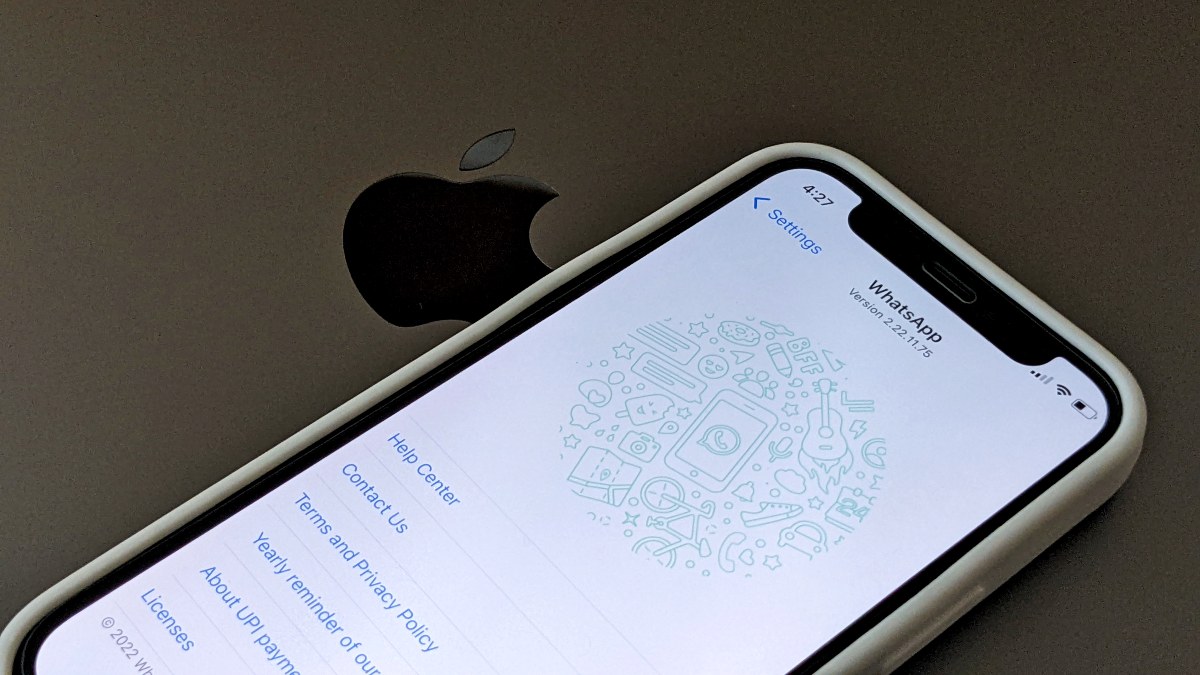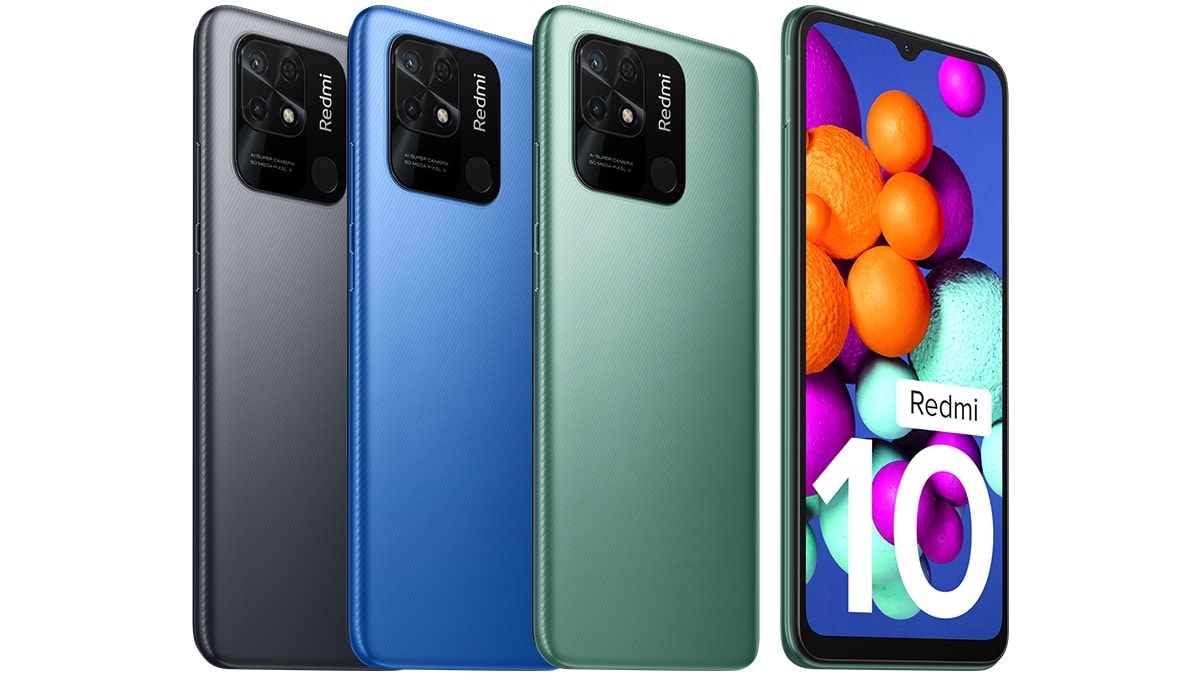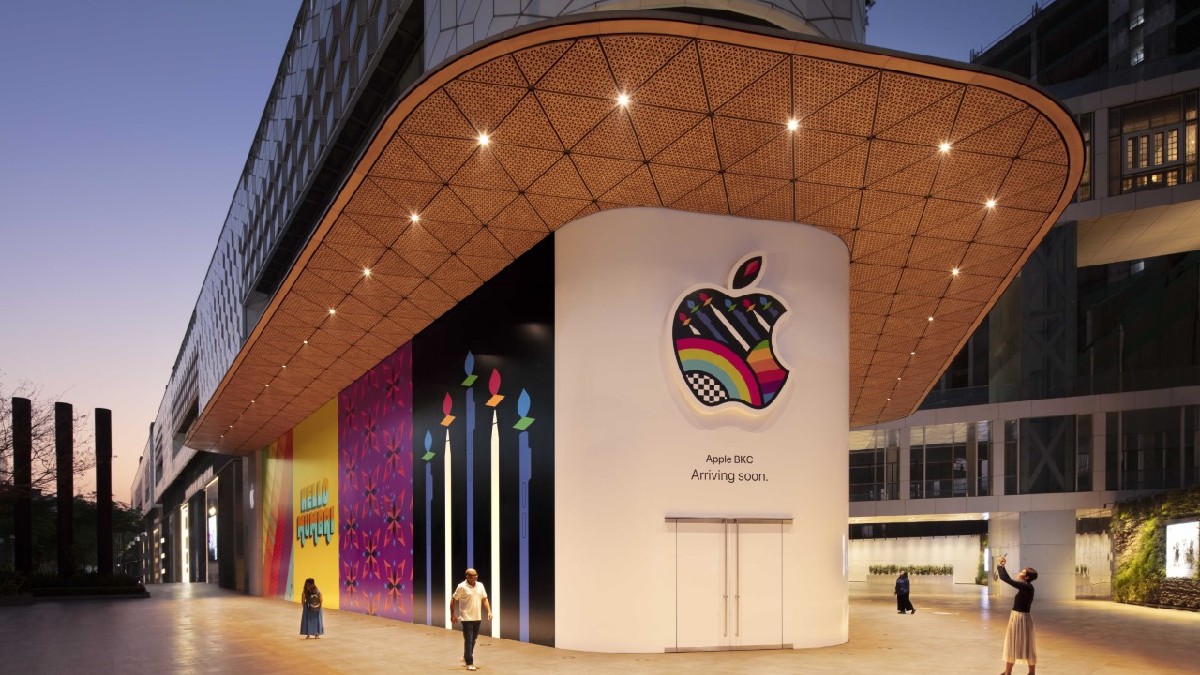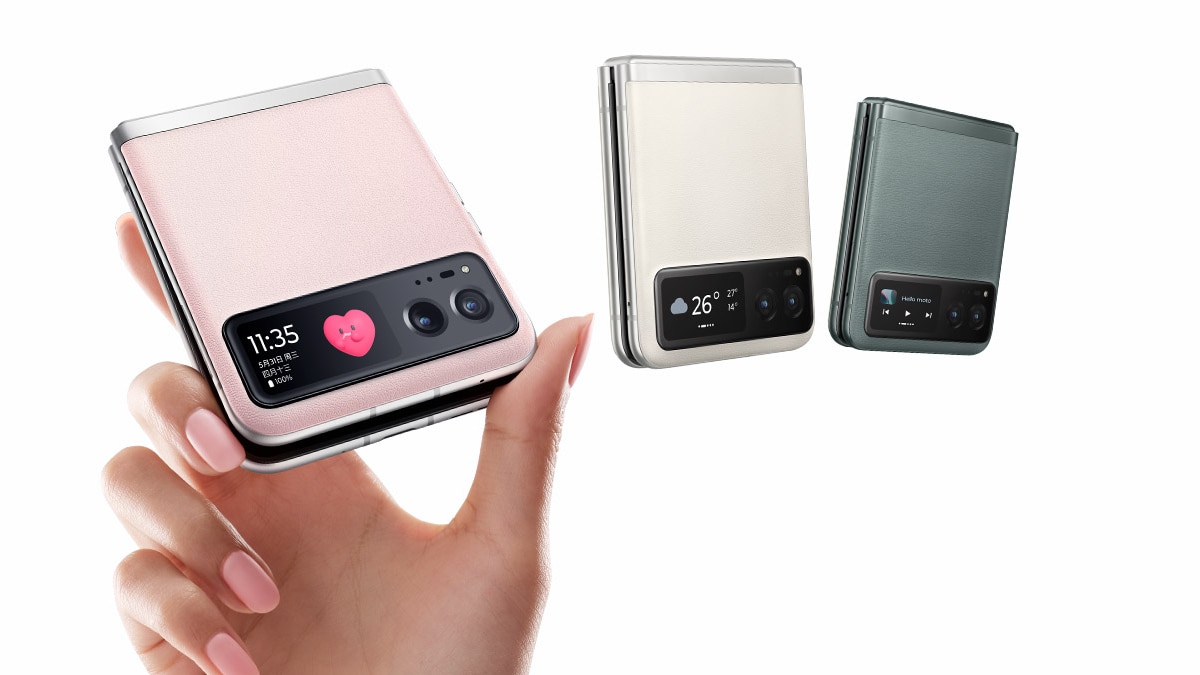Gadgets And Technology Daily News | 03 Jun 2023

Views (199)

WhatsApp Resumes Beta Testing Group Profile Icons on Android, Some Testers Get Updates Tab on iOS: Report

WhatsApp has resumed testing a feature that improves group chats on Android, as part of the latest beta release. The popular messaging app recently began beta testing the ability to show profile icons next to messages on group chats, but it was disabled on subsequent beta releases. Meanwhile, the Meta-owned app has also started rolling out the first version of its Updates tab for beta testers on iOS. WhatsApp is also working on visual improvements on Android, from a redesigned emoji keyboard to new Material You-style toggles in the app's settings.
The appearance of the profile icons in groups was spotted by feature tracker WABetaInfo on version 2.23.12.7 of WhatsApp beta for Android. Beta testers who have updated to this version should be able to see profile icons for all group participants and default "generic" profile icons for users who have not set a profile picture. Gadgets 360 was able to confirm that the feature was enabled on the latest beta version of the app for Android smartphones.
The group profile icon feature was seen in development last year, and was later rolled out to beta testers briefly before it was disabled. Users who update to the latest beta version of WhatsApp for Android should see the icons for profile photos of group participants, making it easy to identify messages from different senders.
Group profile icons on WhatsApp for AndroidPhoto Credit: WABetaInfo
The messaging app was also recently spotted working on Material You-themed toggles for various settings on version 2.23.12.3 of WhatsApp beta for Android. The slim toggles found in the setting section have been replaced with thicker switches with a green accent — in line with Google's Material Design 3 guidelines for designers — to indicate when a setting is enabled.
Meanwhile, WABetaInfo also spotted a new Updates tab on version 23.11.0.70 of WhatsApp beta for iOS. The feature is still in development and is expected to arrive as a redesigned Status tab, showing users both Channels and Status. The Meta-owned messaging service is reportedly working on a broadcast-like feature allowing one-way communication with Channel subscribers.
WhatsApp is also working on additional improvements for a redesigned emoji keyboard that is currently under development. The three buttons that allow a user to switch among GIF, sticker, and the emoji keyboard have been moved to the top of the same section, according to WABetaInfo.
Redmi 12 With MediaTek Helio G99 SoC Reportedly Spotted on Official Portugal Website Ahead of Launch

Redmi 12 is expected to launch soon as the successor to the Redmi 10 model that was released last year. A tipster shared that the phone was spotted on the Redmi's official Portugal website. The screengrab shared by the tipster suggests the design and the price of the upcoming handset. The leak suggests that the smartphone will likely be powered by an octa-core MediaTek Helio G88 SoC. The outgoing Redmi 10 is powered by an octa-core Qualcomm Snapdragon 680 SoC and is backed by a large 6,000mAh battery with 18W fast charging support.
Tipster Kacper Skrzypek (@kacskrz) shared in a tweet a screengrab that showed the Redmi 12 listed on the official Portugal website. The phone is expected to be released in variations of 4GB or 8GB of RAM and 128GB or 256GB of inbuilt storage options. According to the leaked screenshot, the smartphone will start at EUR 209.99 (roughly Rs. 18,600). We at Gadgets360 weren't able to verify the listing, so it's best if this is taken with a pinch of salt.
In the image shared by the tipster, the Redmi 12 is seen in three different colour options - Black, Blue, and White.
Redmi 12 seen on the company's Portugal websitePhoto Credit: Twitter/ @kacskrz
The upcoming Redmi 12 is expected to sport a 6.79-inch full-HD+ display with a refresh rate of 90Hz. It will reportedly be powered by an octa-core MediaTek Helio G88 SoC paired with up to 8GB of RAM and up to 256GB of inbuilt storage.
For optics, a triple rear camera unit on the smartphone is likely to include a 50-megapixel primary sensor, an 8-megapixel ultra-wide unit, and a 2-megapixel sensor. In the image shared, two camera units can be seen placed vertically in the upper left corner of the back panel, beside which there is a smaller camera unit accompanied by an LED flash unit. The front camera is tipped to be equipped with an 8-megapixel sensor, housed in a centre-aligned punch-hole slot at the top of the display.
The Redmi 12 is expected to pack a 5,000mAh battery with 18W wired charging support. It is also said to support NFC and Bluetooth v5.3 connectivity. For security, the phone is likely to come with a side-mounted fingerprint sensor. The handset is expected to weigh 198.5 grams and measure 168.60 x 76.28mm x 8.17mm in size.
Apple Plans Major Retail Push With New, Revamped Stores in the Works for China, US, Europe

Apple is working on plans to expand and revitalize its retail chain, aiming to push deeper into China and other parts of Asia while overhauling established locations in the US and Europe.
Through 2027, the iPhone maker is discussing opening 15 new stores across the Asia-Pacific region, five locations in Europe and the Middle East, and four additional outlets in the US and Canada, according to people with knowledge of the deliberations. The company is also aiming for six revamped or relocated stores in Asia, nine in Europe, and 13 in North America, said the people, who asked not to be identified because the matter is private. In total, the company is proposing 53 new, relocated, or remodeled stores over the next four years.
Apple looks to bring fresh luster to its 22-year-old retail operation, which is one of the world's most venerated chains but also has contended with pandemic woes, customer service problems, and labor unrest in recent years. The idea is to build Apple's brand in growth markets, such as India, while also giving consumers in the US and Europe a better experience.
The most notable new stores under discussion or in development include three sites in India, the company's first outpost in Malaysia, and an upgrade to Apple's historic location in the Opera shopping area of Paris, according to the people. It's also soon opening a store at the Battersea Power Station in London by its new local headquarters and is planning an additional location in Miami. And there's a flagship store slated for the Jing'an Temple Plaza in Shanghai.
Some of the future locations and their timing remain either internal projections or proposals, meaning they could either be delayed or canceled altogether. Still, many of the stores are already in development, with Apple having agreed to leases with landowners. A spokesman for the Cupertino, California-based company declined to comment.
Apple currently has more than 520 stores in 26 countries, with roughly half of them located in the US. The chain is famously lucrative on a square-footage basis, but the stores are often more about building Apple's brand than selling goods. The company gets most of its revenue from other channels, including its e-commerce site. Still, the brick-and-mortar locations serve as a key place for customers to buy products on release days, get technical support, and take classes.
The company's retail operations are overseen by Deirdre O'Brien, one of Apple's longest-serving executives, who took over the duties when Burberry Group Plc veteran Angela Ahrendts left the role in 2019. Construction and upkeep of the stores themselves are managed by Kristina Raspe, Apple's executive in charge of global real estate and facilities. That group reports to the company's chief financial officer rather than O'Brien.
Apple operates four types of retail outlets, according to internal specifications: a standard store within indoor malls, “Apple Store+” locations that can be in outdoor malls or on city streets, “flagships” in key areas with unique designs, and “flagship+” stores, which are the largest and most expensive to operate. Regular stores typically generate more than $40 million (roughly Rs. 329 crore) annually, while Apple Store+ locations bring in over $45 million (roughly Rs. 370 crore), according to internal data. The flagships generate more than $75 million (roughly Rs. 617 crore), while the flagship+ sites make over $100 million (roughly Rs. 823 crore) annually.
The main focus of the expansion is the Asia-Pacific region, with 21 new or revamped sites planned through 2027. The market generated about $130 billion (roughly Rs. 10,70,134,000 crore) of Apple's revenue last year — roughly a third of its total — and countries like India have emerged as a critical growth engine. Apple opened its first two stores in India in April.
Later this year, the company is opening a new mall store in Wenzhou, China, upgrading its Nanjing East flagship in Shanghai, and adding a pair of new outlets in South Korea. That expansion in South Korea, the home turf of chief rival Samsung Electronics, will bring the total number of outposts in the country to seven. Apple opened its Gangnam store in Seoul in March and its Myeongdong location a year ago.
For next year, the company is planning its first store in Malaysia, located in Kuala Lumpur; the new Jing An Temple Plaza location; a remodel of its Pudong site in Shanghai; and potentially its first outpost in Foshan, China. It's also planning a new store at the Grand Front Plaza Mall in Osaka and a remodel of its Shinsaibashi location in the region.
Even with US-China relations and China souring, Apple remains highly dependent on the Asian nation — both as a manufacturing partner and a market for its goods. Chief Executive Officer Tim Cook celebrated that relationship during a trip to China earlier this year, calling it “symbiotic,” and the retail growth underscores Apple's commitment to the country.
For 2025, Apple is discussing opening its third store in India — in the Borivali suburb of Mumbai — and may relocate its site to Perth, Australia. Four new China stores are proposed for that year as well, in addition to a remodel of Apple's Ginza shop in Japan, which was the company's first in the country when it opened in 2003. The store was relocated to a temporary space last year after its original building was demolished.
Apple is proposing opening its fourth India location in 2026. It would be the second one in New Delhi, situated at the DLF Promenade Mall. That store could become the second-largest for Apple in India, after the Bandra Kurla Complex site that debuted in Mumbai in April. The company is also laying the groundwork for a new store in Yokohama, Japan, and a relocated outlet in Shibuya Marui, Japan. In 2027, Apple aims to add a fifth Indian outpost, a location in the seaside Worli area in Mumbai.
In Europe, Apple looks to open a London store in the Battersea location as soon as this month. The company is also planning a new store in Madrid at the La Vaguada shopping center, as well as a relocation for its Milton Keynes store in the UK. Europe generated more than $95 billion (roughly Rs. 7,82,11,600) for Apple last year, or about a fourth of sales. The UK is Apple's third-biggest retail market, home to about 40 stores.
The locations that Apple is rebuilding or moving are mostly aging or outdated stores. In some cases, they're smaller than most modern locations or they lack features like a product pickup area or seating for classes. Apple's aesthetic also has changed over the years. The company has transitioned away from metal walls and accents to wooden shelves.
More broadly, O'Brien is seeking to improve the experience in Apple stores. Complaints from both customers and employees have stacked up in recent years, and the chain has lost some of the cachets it enjoyed when Apple's gleaming logo first began popping up in shopping centers two decades ago. The company has also been dealing with a unionization push both in the US and abroad.
For next year, Apple is discussing relocating four UK stores, as well as a location in Le Chesnay, France, and will open its fourth site in Sweden. A year later, it's planning to relocate one more UK site, potentially remodel the Opera location in France and open a new location in Abu Dhabi's Al Ain. That will mark its fifth store in the United Arab Emirates.
Apple is also proposing a new store in Dortmund, Germany. That country is Apple's eighth-largest retail region, featuring over a dozen sites. For 2027, it's discussing a relocation to Munich.
Apple's retail plans in North America also are focused more on overhauling existing operations than spreading to new cities. First up is a revamp of the Tice's Corner store in Woodcliff Lake, New Jersey, slated for next month. That location was Apple's last with an original black front, dating from the chain's debut in 2001. The company is planning three other US relocations and one Canada store move during the remainder of 2023.
For next year, Apple is considering a few new US sites, including a mall store in the Southern California city of Torrance and a large new location at the $4 billion Worldcenter development in Miami. It is also discussing eventually opening a major new store in Detroit and a relocated store in Ann Arbor, Michigan.
Apple is planning a store at the Birkdale Village Mall in North Carolina as well, replacing a Charlotte location that abruptly shuttered in March following a rash of shootings in the area. An additional five other relocations are being eyed for the US in 2024.
In 2025, Apple is proposing opening its second outlet in Kansas, a large store in Wichita, and is planning three other US relocations. It's also considering moving its Sainte-Catherine Street store in Montreal.
© 2023 Bloomberg LP
Nike Partners EA Sports to Bring Exclusive NFT Collection to Gamers: Details

In a rather pro-Web3 move, Nike has struck a partnership with EA Sports hoping to be able to push elements of Web3 like cryptocurrencies and NFTs, deeper into the international gaming ecosystem. The shoes and athleisure brand Nike has been experimenting with digital collectibles or NFTs for quite some time now. As for EA Sports, the US-based game publisher behind world-famous titles like FIFA and F1 among others, and has a player-base of over 150 million as per Statista.
As part of this deal, Nike's Web3 platform called ‘.Swoosh' will provide its users access to exclusive NFT collections inspired by EA Sports games, which boast a massive community of fans across the globe.
“Nike Virtual Studios and EA SPORTS are today announcing a new partnership aimed at enhancing and personalising the virtual sports experience for fans all over the world. In future EA Sports titles, EA Sports and Nike plan to make select .Swoosh virtual creations available allowing members and players unique new opportunities for self-expression and creativity through sport and style,” an official blog by Nike said.
The companies announced the development officially on Twitter on June 1.
EA SPORTS :handshake: @dotSWOOSHhttps://t.co/hNxxdaMgRL pic.twitter.com/NH8vp0fWoQ
Nike is expected to make its EA Sports-focussed NFTs, customisable. These NFTs would include wearable merchandises inspired by teams within the games. Players will be able to purchase these Nike NFTs to tweak their virtual avatars.
The option to engage with NFTs, most of which are bought with cryptocurrencies, will now reach millions of players who are part of the EA Sports community, which could significantly boost Web3 adoption.
Other prominent players from the gaming sector are also looking at Web3 to refresh the existing video game ecosystem.
Previously, Sony has also filed for patents pertaining to the integration of digital assets and NFTs to its offerings and services.
Over 55 percent of the global gaming community resides in Asia. The continent contributes over $72 billion (roughly Rs. 5,88,229 crore) in annual gaming revenue.
A Chainalysis report also recently highlighted that in the second quarter of 2022, 58 percent of web traffic from Asian nations to crypto services was NFT-related. Another 21 percent traffic was related to play-to-earn blockchain games.
Hence in recent times, the blockchain gaming market in Japan has specifically garnered major interest of the gaming industry.
Motorola Razr 40 Series Confirmed to Launch in India Soon: All Details

Motorola launched its much-awaited Motorola Razr 40 Ultra and Razr 40 foldable flip phones in China yesterday (June 1). Now, the clamshell smartphones from the Lenovo-owned brand are gearing up for their arrival in India. Motorola shared a teaser on social media to offer clear hints about the launch of the Motorola Razr 40 series in the country. The teaser is shown with the hashtag “FlipTheScript.” However, Motorola has not revealed the moniker of the smartphones and their exact launch date. The Motorola Razr 40 Ultra is powered by a Snapdragon 8+ Gen 1 SoC, while the Motorola Razr 40 runs on a Snapdragon 7 Gen 1 SoC.
Motorola on Friday took to Twitter to announce the launch of the Motorola Razr 40 series in India. The company, however, didn't mention the exact launch date and product names. Motorola has also created a dedicated landing page on its website to tease the arrival of foldable smartphones. It is shown with a 'coming soon' tag. Interested people can register their contact details with Motorola to stay updated with the developments regarding the launch and availability of foldable phones.
A #FLIPin' awesome gift awaits. Coming soon to India. #FlipTheScript pic.twitter.com/50ECBmfEwZ
The Motorola Razr 40 Ultra and Motorola Razr 40 were launched in China on Thursday. Price of the Ultra model starts at CNY 5,699 (roughly Rs. 66,000) for the 8GB + 256GB variant, while the regular Motorola Razr 40's price starts at CNY 3,999 (roughly Rs. 46,000) for the 8GB + 128GB variant. It is likely that Motorola may launch its latest flip phones under a different moniker in India.
Both the models run on Android 13 and sport a 6.9-inch (1,080x2,640 pixels) foldable pOLED display with 165Hz refresh rate and 1,200 nits of peak brightness. The Motorola Razr 40 Ultra is powered by a Qualcomm Snapdragon 8+ Gen 1 SoC, whereas the Motorola Razr 40 runs on a Snapdragon 7 Gen 1 SoC. Both phones have a dual rear camera unit and a 32-megapixel shooter for selfies and video chats
Motorola has provided a 3,800mAh battery on the Motorola Razr 40 Ultra that supports 33W fast charging and 5W wireless charging. Meanwhile, the Motorola Razr 40 carries a 4,200mAh battery with support for 30W wired and 8W wireless charging.
Infinix Note 30 5G With JBL Stereo Speakers, 108-Megapixel Camera to Debut in India in June: All Details

Infinix Note 30 5G is confirmed to launch in India in mid-June, but the company has not yet shared the exact date. The smartphone was released last month globally alongside the Infinix Note 30, and Infinix Note 30 Pro. The Note 30 5G model is powered by a MediaTek Dimensity 6080 SoC and is backed by a 5,000mAh battery with 45W wired fast charging support. Infinix India announced on Thursday that the Indian variant of the Note 30 5G will come equipped with JBL stereo speakers and a 108-megapixel primary rear sensor. The company, however, has not yet revealed the price and storage details of the smartphone's Indian variant.
The Infinix Note 30 5G comes with a 6.78-inch full-HD+ (1,080x2,460 pixels) IPS LTPS LCD display, 90.6 percent screen-to-body ratio, 240Hz touch sampling rate, and 580 nits of peak brightness. It runs stock Android 13 out-of-the-box and supports dual nano-SIM.
Infinix's Note 30 5G is powered by an octa-core MediaTek Dimensity 6080 SoC paired with Mali-G57 GPU. It is offered in variations of 6GB and 8GB of RAM and 128GB and 256GB of inbuilt storage. The handset allows virtual RAM expansion of up to an additional 8GB. The storage can be expanded up to 2TB using an external microSD card, for which, the smartphone is equipped with a dedicated slot.
Coming to the cameras, the triple rear camera unit of the Infinix Note 30 5G includes a 108-megapixel primary sensor, an 8-megapixel secondary sensor, and an AI sensor placed on a slightly raised rectangular camera module in the top left corner of the back panel. The 16-megapixel selfie camera is housed in a centre-aligned punch-hole slot at the top of the display.
Packing a 5,000mAh battery, the Infinix Note 30 5G supports 45W wired fast charging that is claimed to charge the handset from zero to 75 percent in 30 minutes. It comes equipped with dual JBL speakers and Hi-Res audio certification. It also has a side-mounted fingerprint sensor for security, a USB Type-C charging port, a 3.55mm audio jack and an IP53 rating for dust and water resistance.
The Infinix Note 30 5G is offered in Interstellar Blue, Magic Black, and Sunset Gold colour options, the last of which come with a lychee-like leatherback finish. The handset weighs 204.7 grams and measures 168.51mm x 76.51mm x 8.45mm in size.
0 Likes
